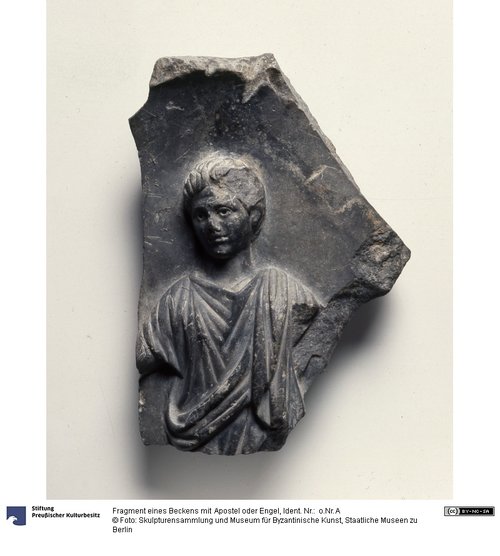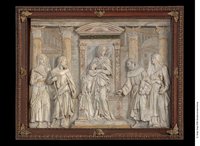Das Fragment stammt von einem Gefäß von 60–65 cm Durchmesser, wie der originale obere Rand und die Krümmung dieses, sowie des zugehörigen Stückes o. Inv. B mit der Darstellung eines der drei Magier beweisen.
Die jugendliche Gestalt auf dieser Scherbe stellt wahrscheinlich einen Apostel, eventuell auch einen Engel dar. Das lebendige Gesicht, das den Körper modellierende Gewand und die feinen Bewegungsmotive sind typisch für die oströmische Skulptur des späten 4. Jahrhunderts.
en

